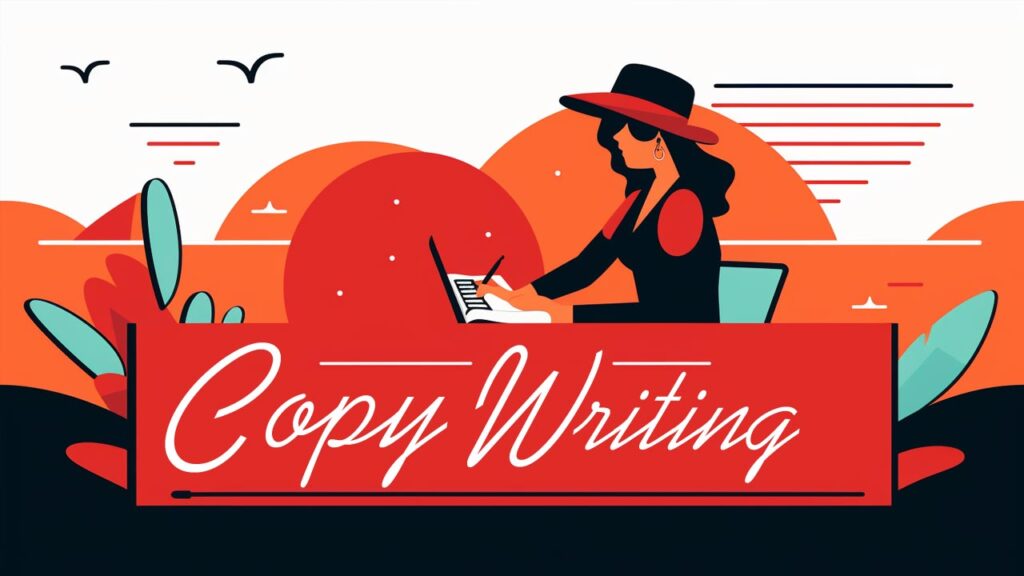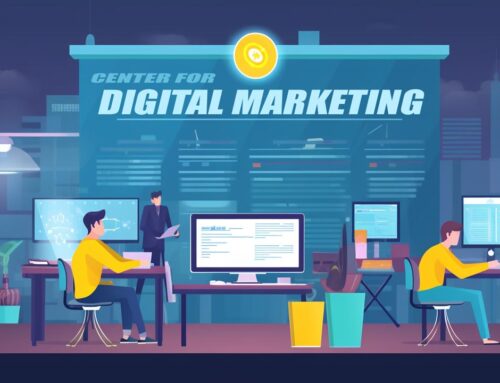In today’s competitive business landscape, effective communication is paramount. Whether you’re running a small business, managing a marketing campaign, or trying to sell a product, the ability to craft compelling and persuasive messages is crucial. This is where copywriting comes into play. Copywriting is the art of using words to persuade, inform, and engage an audience. While it may seem like a skill reserved for seasoned professionals, the truth is that anyone can learn and master the fundamentals of copywriting. In this article, we will explore the essential skills needed to become a proficient copywriter, along with practical tips and techniques to improve your writing.
Table of Contents
- Understanding Your Audience
- Creating Attention-Grabbing Headlines
- Writing Compelling Body Copy
- Mastering the Art of Persuasion
- Understand the Principles of Persuasion
- Appeal to Emotions
- Utilize Rhetorical Devices
- Address Objections and Counterarguments
- Use Social Influence Techniques
- Incorporate Cognitive Biases
- Testimonials and User-Generated Content
- Highlight the Unique Selling Proposition (USP)
- Use Data and Evidence
- Continuous Improvement and Testing
- Crafting Effective Calls-to-Action
- Polishing Your Copy: Editing and Proofreading
- Testing and Optimizing Your Copy
- Frequently Asked Questions
- Wrapping Up
- Sources
Understanding Your Audience

One of the foundational elements of effective copywriting is a deep understanding of your target audience. By gaining insights into their needs, desires, and pain points, you can tailor your messaging to resonate with them on a deeper level. Here are some key aspects to consider when seeking to understand your audience:
Conducting Market Research
Market research is a crucial step in understanding your audience. It involves gathering and analyzing data to gain insights into consumer behavior, preferences, and demographics. There are several methods you can employ to conduct market research:
- Surveys and Questionnaires: Design and distribute surveys to collect information directly from your target audience. This can provide valuable insights into their motivations, preferences, and challenges.
- Customer Interviews: Conduct one-on-one interviews with your existing customers or members of your target audience. This allows for more in-depth conversations, where you can delve into their experiences, pain points, and aspirations.
- Data Analysis: Utilize data from sources such as website analytics, social media analytics, and customer feedback to identify trends and patterns. This can help you uncover valuable information about your audience’s behavior and preferences.
Creating Buyer Personas
A buyer persona is a fictional representation of your ideal customer. It helps you visualize and understand the characteristics, motivations, and behaviors of your target audience. When creating buyer personas, consider factors such as age, gender, occupation, lifestyle, interests, goals, and challenges. This exercise enables you to craft more targeted and personalized messaging that resonates with your audience.
Identifying Pain Points and Desires
To create persuasive copy, you must identify and address your audience’s pain points and desires. Pain points refer to the problems, challenges, or frustrations your audience is facing, while desires represent their aspirations, goals, and aspirations. By understanding these aspects, you can position your product or service as a solution to their problems or a means to fulfill their desires.
Tailoring Your Message
Once you have a clear understanding of your audience, you can tailor your messaging to effectively communicate with them. Use the language, tone, and style that resonates with your target audience. Speak directly to their needs, desires, and emotions. By demonstrating that you understand their challenges and can provide a solution, you build trust and establish a connection with your audience.
Ongoing Feedback and Analysis
Understanding your audience is an ongoing process. Continuously seek feedback from your customers and monitor market trends. Stay updated on changes in consumer behavior, preferences, and industry developments. This enables you to adapt your messaging and stay relevant in a dynamic marketplace.
By investing time and effort in understanding your audience, you can create copy that speaks directly to their needs and drives engagement and conversions. Remember, effective copywriting is rooted in empathy and the ability to connect with your audience on a deeper level.
Creating Attention-Grabbing Headlines

In the world of copywriting, headlines play a critical role in capturing the attention of your audience. A well-crafted headline can entice readers to delve further into your copy, while a lackluster one may cause them to move on. Here are some strategies and techniques to create attention-grabbing headlines:
Be Concise and Clear
Headlines should be concise and straightforward, delivering the main message in a succinct manner. Avoid using unnecessary words or jargon that may confuse or alienate your audience. A clear headline ensures that readers quickly understand what your copy is about and what they can expect.
Evoke Curiosity or Emotion
Curiosity is a powerful tool in capturing attention. Craft headlines that pique the curiosity of your audience and make them eager to learn more. Pose a thought-provoking question, present a surprising fact, or offer a teaser that promises valuable information. By arousing curiosity, you create a desire to continue reading.
Emotional appeal is another effective approach. Tap into the emotions of your audience by creating headlines that evoke joy, excitement, fear, or urgency. Emotions can be powerful motivators that drive engagement and action.
Use Power Words
Power words are persuasive terms that evoke strong emotions or create a sense of urgency. Incorporating power words into your headlines can make them more compelling and impactful. Examples of power words include “discover,” “ultimate,” “exclusive,” “unleash,” “revolutionary,” and “proven.” These words add depth and excitement to your headlines, making them more enticing to readers.
Provide a Solution
Headlines that promise to solve a problem or address a pain point can be highly effective. Identify the key challenges or desires of your audience and incorporate them into your headlines. Clearly communicate the benefits or solutions your product or service offers, highlighting how it can improve their lives or solve their problems. Offering a solution creates a sense of relevance and encourages readers to continue reading.
Utilize Numbers and Statistics
Including numbers or statistics in your headlines can attract attention and increase credibility. Numbers provide a tangible and specific element to your headline, making it more compelling. For example, “5 Strategies for Boosting Your Productivity” or “80% of Customers Recommend Our Services.” Numbers help quantify the value or impact of your content, making it more enticing to readers.
Experiment with Headline Formulas
There are various proven headline formulas that can help you craft attention-grabbing headlines. Some popular formulas include:
- How-to: “How to Skyrocket Your Sales in 7 Simple Steps”
- Question: “Are You Making These Common Marketing Mistakes?”
- List: “10 Essential Tools Every Entrepreneur Needs”
- Direct Benefit: “Get Whiter Teeth in Just 7 Days”
- Controversial: “Why Traditional Marketing is Dead”
Experiment with different headline formulas to see what resonates best with your audience and aligns with your content.
Remember to align your headline with the content of your copy. Misleading or clickbait headlines can damage your credibility and lead to disappointment for readers. Deliver on the promises made in your headline to maintain trust and engagement.
Crafting attention-grabbing headlines is a skill that takes practice. Continuously test and analyze the performance of your headlines to understand what works best for your audience. By investing time and effort into creating compelling headlines, you can significantly increase the effectiveness of your copy and drive higher reader engagement.
Writing Compelling Body Copy

While attention-grabbing headlines are crucial, the body copy is where you have the opportunity to truly engage and persuade your audience. Well-written body copy communicates the value, benefits, and unique selling propositions of your product or service. Here are some strategies to create compelling body copy that keeps readers engaged:
Understand Your Value Proposition
Before writing your body copy, clearly define your value proposition. Identify the unique benefits and advantages your product or service offers to your target audience. Understanding your value proposition helps you structure your copy around the most compelling aspects of your offering.
Focus on Benefits, Not Just Features
Instead of solely listing features, emphasize the benefits your audience will gain from your product or service. Clearly articulate how it solves their problems, fulfills their desires, or improves their lives. Benefits answer the question, “What’s in it for me?” and are more persuasive and engaging than a simple list of features.
Tell a Story
Humans are wired to respond to stories. Incorporating storytelling techniques into your body copy can captivate your audience and make your message more memorable. Share customer success stories, anecdotes, or personal experiences that illustrate the impact and value of your offering. Storytelling creates an emotional connection with readers and helps them relate to your message.
Provide Social Proof
Including social proof in your body copy adds credibility and builds trust. Social proof can take the form of testimonials, case studies, reviews, or endorsements from satisfied customers. People are more likely to trust the opinions and experiences of others, so highlighting positive feedback can be a powerful persuasive tool.
Address Objections and Overcome Resistance
Anticipate and address potential objections or concerns your audience may have. Proactively providing information or reassurance can alleviate doubts and increase trust. Address common objections in your body copy and provide evidence, facts, or guarantees that alleviate any hesitations or reservations your audience may have.
Use Persuasive Language and Techniques
Incorporate persuasive language and techniques to make your body copy more compelling. Some effective techniques include:
- Power Words: Utilize persuasive words that evoke emotion, such as “exclusive,” “limited,” “proven,” or “guaranteed.” These words add impact and urgency to your copy.
- Scarcity: Highlight limited availability, time-limited offers, or scarcity of your product or service to create a sense of urgency and drive action.
- Authority: Establish your credibility by showcasing relevant credentials, expertise, or industry recognition. Demonstrating authority helps build trust and positions you as an expert in your field.
- Comparisons: Make comparisons to help readers understand the value or superiority of your offering. Highlight how your product or service outperforms competitors or previous alternatives.
Use Formatting and Visual Elements
Make your body copy easy to read and visually appealing. Use subheadings, bullet points, and short paragraphs to break up the text and improve readability. Incorporate relevant visuals, such as images, charts, or infographics, to enhance understanding and engagement.
End with a Strong Call-to-Action
Every piece of body copy should have a clear and compelling call-to-action (CTA). The CTA tells the reader what action to take next, whether it’s making a purchase, signing up for a newsletter, or contacting your business. Make the CTA specific, concise, and compelling, clearly conveying the benefits of taking the desired action.
Continuously Test and Refine
Regularly test and analyze the performance of your body copy. Pay attention to metrics such as engagement rates, conversion rates, and time spent on page. A/B testing different versions of your copy can help you identify what resonates best with your audience and refine your messaging for optimal results.
By implementing these strategies, you can create body copy that engages, persuades, and compels your audience to take the desired action. Remember to focus on communicating the value and benefits, addressing objections, and using persuasive techniques to create a persuasive and impactful message.
Mastering the Art of Persuasion

As a copywriter, mastering the art of persuasion is essential to effectively communicate your message and influence your audience’s behavior. Persuasion techniques help you connect with your readers on an emotional and logical level, increasing the likelihood of them taking the desired action. Here are some strategies to enhance your persuasive copywriting skills:
Understand the Principles of Persuasion
Familiarize yourself with the principles of persuasion to create more impactful copy. One widely recognized framework is Robert Cialdini’s “Principles of Influence,” which include:
- Reciprocity: Offer something of value to your audience, such as free resources, exclusive discounts, or useful information, to stimulate a sense of obligation and encourage reciprocation.
- Scarcity: Highlight limited availability, time-limited offers, or unique features to create a sense of scarcity and urgency. Scarcity can drive action as people fear missing out on opportunities.
- Authority: Establish your expertise and credibility in your niche. Leverage relevant credentials, endorsements from experts, or industry awards to position yourself as a trusted authority.
- Consistency: Encourage small commitments or actions from your audience that align with their beliefs or previous behaviors. Once people commit to a small action, they are more likely to remain consistent and take bigger steps.
- Social Proof: Utilize testimonials, case studies, success stories, or user-generated content to demonstrate that others have benefited from your product or service. People tend to follow the actions of others, especially when they can relate to them.
- Liking: Build rapport and likeability by showing genuine interest, using relatable language, sharing personal anecdotes, and finding common ground with your audience.
Understanding and incorporating these principles into your copy can significantly enhance its persuasive impact.
Appeal to Emotions
Emotions play a crucial role in decision-making. Tap into the emotions of your audience by creating an emotional connection through your copy. Use storytelling techniques, vivid descriptions, and relatable scenarios to evoke emotions such as joy, fear, desire, or empathy. Emotional copy resonates deeply with readers, making your message more memorable and influential.
Utilize Rhetorical Devices
Rhetorical devices add rhetorical flair and persuasive power to your copy. Employ techniques such as metaphors, analogies, vivid imagery, and sensory language to paint a vivid picture in the minds of your readers. These devices help create a more engaging and persuasive experience, as they stimulate the imagination and evoke strong mental associations.
Address Objections and Counterarguments
Anticipate objections or counterarguments that your audience may have and proactively address them in your copy. Acknowledging potential concerns and providing well-reasoned responses helps build trust and credibility. By addressing objections head-on, you remove barriers that might prevent readers from taking the desired action.
Use Social Influence Techniques
Social influence techniques leverage the power of social dynamics to persuade your audience. For example:
- Social Proof: Highlight the popularity, positive reviews, testimonials, or endorsements from influential individuals to demonstrate that others have embraced your product or service.
- Bandwagon Effect: Tap into the desire to be part of a group or trend. Showcase how a significant number of people have already adopted your offering, implying that others should follow suit.
- Influencer Marketing: Collaborate with influencers in your industry to promote your product or service. Their endorsement and recommendation can significantly influence the decisions of their followers.
Incorporate Cognitive Biases
Cognitive biases are inherent mental shortcuts or patterns of thinking that influence decision-making. By understanding these biases, you can shape your copy to align with how people naturally process information. Some common biases include:
- Anchoring Bias: People rely heavily on the first piece of information presented to them. Use this bias to your advantage by presenting a compelling initial offer or unique selling point.
- Loss Aversion: People are more motivated to avoid losses than to acquire gains. Frame your copy in a way that emphasizes what readers stand to lose if they don’t take action.
- Confirmation Bias: People seek information that confirms their existing beliefs or opinions. Tailor your copy to align with your audience’s beliefs and values to reinforce their decision-making process.
Testimonials and User-Generated Content
Incorporate testimonials, reviews, and user-generated content to showcase the positive experiences of your customers. Authentic and relatable testimonials help build trust and provide social proof of the benefits and value of your offering. Encourage customers to share their experiences and use their stories to strengthen your persuasive message.
Highlight the Unique Selling Proposition (USP)
Your unique selling proposition sets you apart from competitors. Clearly articulate what makes your product or service unique, different, or superior. Emphasize the specific benefits, features, or qualities that give you a competitive edge. A compelling USP helps persuade your audience to choose your offering over alternatives.
Use Data and Evidence
Support your claims and arguments with data, research, and evidence. Incorporate relevant statistics, studies, case studies, or expert opinions to add credibility and persuade your audience. Concrete evidence enhances your persuasive message, making it more convincing and trustworthy.
Continuous Improvement and Testing
Effective persuasion is an ongoing process of refinement. Continuously test and analyze the performance of your copy. A/B testing different versions, headlines, or calls-to-action can help you understand what resonates best with your audience. Analyze metrics such as conversion rates, click-through rates, and engagement levels to optimize your copy for maximum impact.
By mastering the art of persuasion, you can create copy that deeply influences and compels your audience to take the desired action. Incorporate these strategies and techniques into your copywriting practice, continuously refine your skills, and adapt to the evolving needs and preferences of your audience.
Crafting Effective Calls-to-Action

A call-to-action (CTA) is a crucial element in persuasive copywriting. It directs your audience towards the specific action you want them to take, whether it’s making a purchase, signing up for a newsletter, downloading a resource, or contacting your business. Crafting an effective CTA is essential to encourage conversions and drive desired outcomes. Here are some strategies to create compelling and persuasive calls-to-action:
Be Clear and Specific
A strong CTA leaves no room for confusion. Clearly state the desired action you want your audience to take, using concise and specific language. For example, instead of a vague CTA like “Click here,” use a more specific CTA like “Get Your Free Ebook Now” or “Start Your 30-Day Trial.” The clarity of your CTA ensures that readers understand what they need to do next.
Create a Sense of Urgency
Incorporating a sense of urgency can prompt immediate action from your audience. Highlight time-limited offers, limited availability, or exclusive deals to create a sense of scarcity. Use words and phrases like “Limited Time Offer,” “Act Now,” or “Last Chance” to convey urgency. Urgency compels readers to take action before they miss out on the opportunity.
Use Action-Oriented Language
Utilize action verbs to make your CTAs more compelling and persuasive. Action-oriented language prompts readers to engage and motivates them to act. Examples of action verbs include “Buy,” “Download,” “Join,” “Subscribe,” “Discover,” “Start,” or “Get.” These verbs inspire a sense of movement and encourage readers to take the desired action.
Highlight Benefits and Value
Emphasize the benefits or value your audience will gain by taking the desired action. Explain how they will benefit from your product, service, or offer. For example, use CTAs like “Unlock Your Full Potential,” “Save Time and Money,” or “Transform Your Business Today.” By emphasizing the value proposition, you make the CTA more appealing and motivate readers to click or engage.
Use Design and Formatting Techniques
Make your CTA visually stand out by using design and formatting techniques. Use contrasting colors, larger fonts, or buttons to draw attention to the CTA. Surround it with ample white space to make it visually distinct from the surrounding text. Make sure the CTA is easily clickable and accessible, especially in digital mediums.
Create a Sense of Trust and Security
Address any potential concerns or hesitations that may prevent readers from taking action. Incorporate trust elements such as security badges, guarantees, or testimonials near the CTA. Assure your audience that their information will be secure, or highlight any money-back guarantees or risk-free trials. Establishing trust helps overcome objections and encourages readers to proceed.
Personalize and Tailor CTAs
Segment your audience and personalize your CTAs based on their interests, preferences, or behaviors. Use dynamic content or targeted messaging to deliver tailored CTAs that resonate with specific segments of your audience. Personalization creates a more relevant and engaging experience, increasing the likelihood of conversions.
Test and Optimize
Continuously test different variations of your CTAs to identify what resonates best with your audience. A/B testing can help you determine the most effective wording, design, placement, or color schemes for your CTAs. Analyze metrics such as click-through rates, conversion rates, and engagement levels to optimize your CTAs and refine your approach.
Crafting effective CTAs is crucial to driving conversions and achieving your desired outcomes. By employing clear language, creating urgency, highlighting benefits, using action-oriented verbs, leveraging design techniques, building trust, personalizing, and testing, you can create CTAs that persuade and inspire your audience to take action.
Polishing Your Copy: Editing and Proofreading

Editing and proofreading are essential steps in the copywriting process. They help ensure that your copy is clear, error-free, and polished before it is published or shared with your audience. Here are some strategies to effectively edit and proofread your copy:
Take a Break
After completing your initial draft, step away from your copy for a while. Taking a break allows you to approach the editing process with a fresh perspective. When you return to your copy, you’ll be better able to identify areas that need improvement and make objective judgments.
Review for Clarity and Flow
Read your copy aloud to check for clarity and flow. Listen for any awkward or confusing sentences, repetitive phrases, or convoluted ideas. Consider the readability of your copy and whether it effectively conveys your message to your audience. Simplify complex sentences, eliminate unnecessary jargon, and ensure that your ideas flow logically and smoothly.
Trim Excess Words
Trimming excess words helps make your copy concise and impactful. Look for opportunities to eliminate unnecessary adjectives, adverbs, and redundant phrases. Keep sentences and paragraphs focused and to the point. Be ruthless in your editing to ensure that every word serves a purpose and contributes to the overall clarity and effectiveness of your message.
Check Grammar, Spelling, and Punctuation
Meticulously review your copy for grammar, spelling, and punctuation errors. Grammar mistakes and typos can diminish your credibility and distract readers from your intended message. Use grammar-checking tools or consult style guides to ensure proper usage of punctuation, capitalization, verb tense, and subject-verb agreement. Pay close attention to commonly confused words and homonyms, such as “their” and “there,” “its” and “it’s,” or “your” and “you’re.”
Ensure Consistency
Consistency is key in creating professional and polished copy. Check for consistency in terms of tone, style, formatting, and language usage. Ensure that headings, subheadings, and bullet points follow a consistent structure. Verify that any abbreviations, acronyms, or industry-specific terms are used consistently throughout the copy. Consistency enhances readability and improves the overall coherence of your message.
Fact-Check and Verify Accuracy
Double-check any facts, statistics, or claims presented in your copy. Make sure they are accurate, up-to-date, and supported by credible sources. Verify that any quotes or references are attributed correctly. Fact-checking ensures that your copy is reliable and trustworthy, which is crucial for building credibility with your audience.
Seek Feedback and Proofread
Ask a colleague, friend, or proofreading professional to review your copy. A fresh pair of eyes can spot errors, inconsistencies, or areas of improvement that you may have overlooked. Another person’s perspective can provide valuable insights and help refine your copy even further.
Read Backwards
When proofreading, read your copy backwards, sentence by sentence. This technique helps you focus on individual words and phrases rather than getting caught up in the flow of the text. By reading backwards, you can catch spelling errors, typos, or grammatical issues that may otherwise go unnoticed.
Use Tools and Resources
Leverage proofreading tools and resources to enhance the accuracy and quality of your copy. Grammar and spell-checking software, such as Grammarly or Hemingway Editor, can help catch common errors and provide suggestions for improvement. Style guides, such as The Chicago Manual of Style or The Associated Press Stylebook, offer guidelines for consistent language usage and formatting.
Double-Check Formatting and Layout
Before finalizing your copy, review the formatting and layout. Ensure that headings, subheadings, bullet points, and paragraphs are visually appealing and organized in a logical manner. Check that any hyperlinks or URLs are correct and functional. Pay attention to font consistency, line spacing, and overall visual coherence.
By diligently editing and proofreading your copy, you can enhance its clarity, correctness, and professionalism. Taking the time to refine your writing ensures that your message effectively reaches and engages your audience. Remember, polished and error-free copy reflects positively on your brand and increases the credibility and impact of your communication.
Testing and Optimizing Your Copy

Testing and optimizing your copy is a critical step in the copywriting process. It allows you to gather data, analyze performance, and make informed decisions to improve the effectiveness of your copy. Here are some strategies to effectively test and optimize your copy:
Set Clear Objectives
Before testing your copy, establish clear objectives and key performance indicators (KPIs) that align with your overall goals. Determine what specific actions or outcomes you want to achieve, such as increasing click-through rates, boosting conversions, or improving engagement. Clear objectives provide a framework for measuring success and guiding your optimization efforts.
Conduct A/B Testing
A/B testing, also known as split testing, involves comparing two versions of your copy to identify which performs better. Select a single variable to test, such as headlines, call-to-action (CTA) wording, imagery, or layout. Create two versions of your copy, changing only the variable you want to test. Split your audience into two groups and expose each group to one version of the copy. Measure and compare the performance metrics of each version to determine which yields better results.
Analyze Key Metrics
Collect and analyze relevant metrics to assess the performance of your copy. Depending on your objectives, track metrics such as click-through rates, conversion rates, bounce rates, time on page, or engagement levels. Use web analytics tools, such as Google Analytics, to gather data and gain insights into user behavior. The data obtained will guide your optimization efforts and help you make data-driven decisions.
Test Different Elements
Beyond A/B testing, experiment with different elements in your copy to optimize its performance. Test variables such as headlines, body copy, CTAs, images, color schemes, or layout. Assess how each variation impacts user engagement, conversion rates, or other desired outcomes. By systematically testing different elements, you can identify the most effective combination that resonates with your audience.
Optimize Based on User Feedback
Collect feedback from your audience to gain insights into their preferences and perceptions. Encourage users to provide feedback through surveys, polls, or comments. Analyze their feedback to identify patterns or common themes. Pay attention to their suggestions, pain points, or areas of improvement. User feedback can guide your optimization efforts and help you align your copy with their needs and expectations.
Iterate and Refine
Optimization is an iterative process. Continuously refine and improve your copy based on the insights gained from testing and analysis. Implement changes and monitor the impact on key metrics. Refinement could involve tweaking headlines, adjusting CTAs, rewriting sections of your copy, or modifying design elements. Regularly revisit and optimize your copy to stay relevant, adapt to evolving audience preferences, and achieve better results.
Keep Up with Industry Trends
Stay informed about industry trends, emerging technologies, and evolving consumer behavior. Keep an eye on your competitors and observe successful copywriting campaigns in your niche. By staying current, you can identify new opportunities, discover innovative approaches, and adapt your copy to align with the latest trends. Embracing change and being proactive in optimizing your copy can give you a competitive edge.
Track Conversion Funnels
Map out your conversion funnels to gain a comprehensive understanding of how users navigate through your copy and what actions they take. Identify potential bottlenecks or areas of drop-off where users abandon the conversion process. By analyzing the conversion funnel, you can identify opportunities for improvement and optimize specific touchpoints to increase conversions.
Be Patient and Analytical
Testing and optimization require patience and a data-driven mindset. Avoid making hasty conclusions based on limited data. Give each test enough time to collect a sufficient sample size before drawing conclusions. Analyze the data objectively and identify statistically significant results. By taking a systematic and analytical approach, you can make informed decisions that lead to meaningful improvements.
Document and Learn from Results
Keep a record of your testing and optimization efforts, including the variations tested, the metrics tracked, and the outcomes observed. Document the insights gained and the lessons learned from each test. This documentation serves as a valuable resource for future reference and informs your copywriting strategy moving forward. Over time, you will accumulate knowledge and insights that will guide your optimization efforts more effectively.
Testing and optimizing your copy is an ongoing process that helps you refine and improve your messaging to achieve optimal results. By systematically testing different elements, analyzing key metrics, and being responsive to user feedback, you can continuously enhance the effectiveness of your copy and drive better outcomes.
Frequently Asked Questions
Wrapping Up
Becoming a proficient copywriter is within reach for anyone willing to learn and practice. By understanding your audience, crafting attention-grabbing headlines, writing compelling body copy, mastering the art of persuasion, crafting effective calls-to-action, polishing your copy through editing and proofreading, and continuously testing and optimizing, you can develop the skills necessary to create persuasive and impactful copy.
Remember, copywriting is both an art and a science. While the principles outlined in this article provide a solid foundation, it’s essential to stay curious, adapt to evolving trends, and continually refine your skills. With dedication and practice, you can become a masterful copywriter who drives results and effectively communicates with your target audience.
Sources
- American Writers & Artists Inc. (AWAI) – Copywriting Basics
- Copyblogger – How to Write Magnetic Headlines
- QuickSprout – The Definitive Guide to Copywriting
- ConversionXL – The Ultimate Guide to A/B Testing
- Neil Patel – How to Write Headlines That Drive Traffic, Shares, and Search Results
- Dan Lok – The Art of Writing Seductive Copy









Leave A Comment